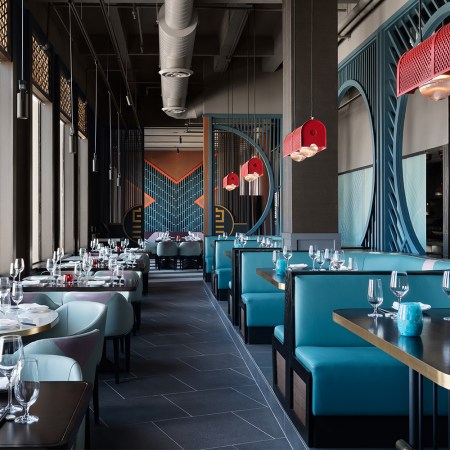Following a lengthy closure related to storm damage, Hearst Castle is scheduled to reopen on May 11, with tickets now on sale. A new biography tells story of the building’s architect, Julia Morgan — the woman whose style has come to define San Francisco’s most famous buildings. We talked to its author, Julia Kastner.
No matter how creative a person may be, no matter how great their output, they are often identified by a single work. Warhol will always be the guy who painted a Campbell Soup can. Jay McInerney will never escape Bright Lights Big City. And architect Julia Morgan will always be best known as the woman who gave newspaper magnate William Randolph Hearst his pleasure palace on a hill. But as Victoria Kastner reminds us in a new biography (and even architecture buffs need reminding), Morgan was far more than Hearst’s architect of choice.
The first thing to remember is that Morgan was born 150 years ago. And when she became the first woman to earn a degree in civil engineering from UC Berkeley in 1894, most educated women were lucky if they found work as secretaries or teachers. As Kastner makes clear in Julia Morgan: An Intimate Portrait of the Trailblazing Architect (Chronicle Books), this San Francisco native was never one to settle. Bright and ambitious, she stormed the staunchly male École des Beaux-Arts in Paris and emerged with a diploma, the first woman to pass its rigorous academic program. Back home, she went to work in the office of John Galen Howard, who was helming a new master plan for the University of California, Berkeley — the pet project of philanthropist Phoebe Hearst, mother to W.R.
Morgan launched her own practice in 1904. One of her first projects was a bell tower for Mills College, which she fashioned from reinforced concrete, a novel material at the time. A number of residential commissions followed, as well as the rebuilding of Fairmont Hotel after the 1906 quake. While the Spanish Colonial Revival castle she created for Hearst at San Simeon throws a long shadow across her career, by the time she died in 1957, Morgan’s portfolio numbered over 700 buildings in a variety of styles, from schools and churches to hospitals and theaters. “Her greatest ensemble of Arts and Crafts buildings was Asilomar, the YWCA summer retreat for young working women built along the shoreline south of Monterey,” says Kastner. “It’s very rustic and simple — the antithesis of San Simeon — but it expressed the same kind of thoughtfulness, blending the historicism and elegance of the Beaux-Arts with the individuality of Arts and Crafts.”
Morgan had already worked for Hearst on several projects, including a Mission-style headquarters for The Los Angeles Examiner, before drafting her first designs for his hilltop estate in 1919. By 1947, the property — which Hearst called La Cuesta Encantada (“Enchanted Hill”) — came to comprise multiple structures with 165 rooms and 123 acres of exquisitely composed outdoor space. Although open to the public since 1958, it was years before Morgan got her due as the creator of one of the most gargantuan residences in the country.
“Life magazine ran a 14-page cover story in 1957 and Julia Morgan’s name was never mentioned,” notes Kastner. “In the ‘60s, Joan Didion wrote an essay, ‘A Trip to to Xanadu’ and never mentioned Julia Morgan either.” When Kastner made her first visit to Hearst Castle in 1978 (she subsequently became the site’s official historian), the tour guide said next to nothing about Morgan.
Although not unknown today (architectural historian Sara Holmes Boutelle published a substantive study in 1988), Morgan has never been a household name. Neither as visionary nor self-promoting as, say, Frank Lloyd Wright, Morgan was fluent in a variety of styles and always put the client first, not her own imagination. Plus, her historicist eclecticism couldn’t compete with the juggernaut of the International Style. But in her prime, Morgan held her own. Highly skilled, with an enviable capacity for work, she was at home with both engineering and aesthetics.
“There were very few architects in America that designed on an equivalently palatial scale, and they were both decades older,” observes Kastner. “One was Richard Morris Hunt, who designed the Biltmore in Asheville in 1896 and the other was Stanford White, who died in 1906 and designed the Newport Casino and the University Club in New York. She was competing on the same playing field and actually often surpassing her male colleagues. She didn’t advertise, she was very private and self-effacing. But the work came to her because she was so remarkable.”
This article was featured in the InsideHook SF newsletter. Sign up now for more from the Bay Area.






















